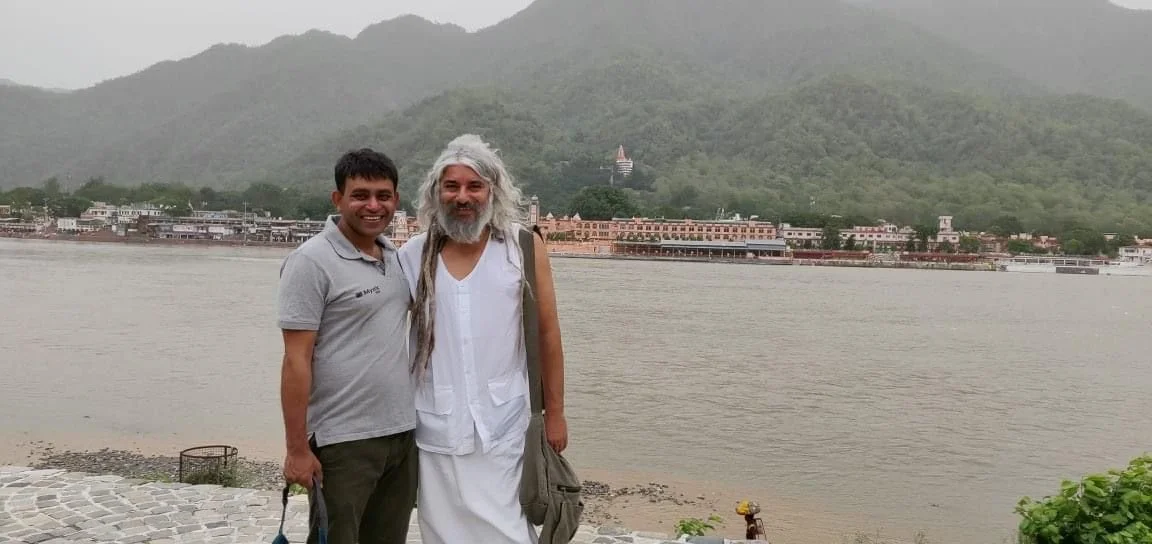As International Day of Yoga approaches us, it is only appropriate to get some perspective on how Yoga has travelled from rustic forest hermitages to downtown Yoga studios.
.
Below is an article by Sudhir concerning the Journey of Yoga as published in the Sikkim Express, one of the oldest and the largest circulating daily in the Himalayan state of Sikkim.
In some of the early texts, the yogis that are mentioned are not necessarily the clean-living, health-conscious and physically toned practitioners we would recognize by that word today. The holy itinerants who practiced yoga, generally known as sadhus, seem to have been raggle-taggle gypsies who wandered the earth freely, unshackled by convention and in pursuit of spiritual ecstasy, which they would get wherever they could find it.
From the various akhadas and rustic hermitages tucked away from the city environment where inner research and spiritual quest was seeded, Yoga was practiced entrenched in simplicity and devoid of sensuality, with strict set of rules and vows. Many esoteric practices were not to be revealed to those caring for business and family and were for those exclusively committed to yogic journey and quest. Yoga has indeed travelled a long way not just from the East to the West and from spiritual to the secular but also from loin cloth to insanely expensive leggings and yoga pants.
Body-Yoga and Mind-Yoga both were predominantly practiced and symbolized refined masculinity is now majorly in the feminine domain. Historically what was within the purview of those retiring from the care of the world is now significantly practiced by those enmeshed in affairs of the world. The devolution of Yoga to the market place has created a buzz and a buzzing industry, with the potential to grow exponentially for another couple of decades, at least, and well set to surpass the $100-billion mark by 2027. Contemplative silence and reserve of the yore has given way to social networking; dialogue and debate for distilling wisdom nuggets is often overshadowed with what are latest diet fad, health gizmos, wellness and cosmetic industry. More serious quest, search, discussions and practices are often limited to residential programs or retreats.
Though the number of Yoga practitioners globally by conservative estimates alone exceeds 300 million but for the vast majority there is a palpable confusion as to what its real aim might be. Yoga has been universally accepted as a practice clearly beneficial for health, fitness, and overall wellbeing and since 2014 become United Nations official mascot for the promotion of global health, harmony and peace. However in this wide spread accolade and acclaim there is a serious lack of understanding of the scope, purpose and the potency of Yoga.
Is postural Yoga an end in itself or there is a deep connect between body culture, spiritual growth and psychic purification? Hatha Yoga is one of the most popular forms of exercise in the world, and it’s become a global phenomenon over the past couple decades. While in some countries’ popularity for yoga still remains fairly small, there are those where it is an integral part of everyday life.
India while proposing Yoga Day at the United Nations clarified that Yoga embodies unity of mind and body; thought and action; restraint and fulfilment; harmony between man and nature; a holistic approach to health and well-being. It is not just about exercise but to discover the sense of oneness with oneself, the world and the nature. By changing our lifestyle and creating consciousness, it can help in well-being. Though Yoga Day was adopted by United Nations in 2014, yoga sequences continue to spread like wild fire, but igniting the spirit of Yoga and sowing the seed of Yogic understanding will require a next level paradigm shift.
Hatha Yoga meant something quite different in fifteenth-century India, when the Hatha Yoga Pradapika, the classical text on Hatha was composed, to what it means in the twenty-first-century West. Though Yogic science may legitimately surpass the scope of empirical research, still it is worth mentioning that academic research is suggesting that forms of mind-yoga seem to predate body-yoga where specific techniques of mental introversion or meditation are attempted. With the diligent practice of posture (asana), the bandhas (contract and lift the abdomen or draw the pelvic floor inward), purification regime (kriyas), and breathing exercises (pranayama) the gross and subtle bodies of an aspirant are suitably purified; deep meditation will yield him occult powers and, eventually facilitate liberation from all constraints culminating into enlightenment.
Whatever was left shrouded in mystery in Vedas, about Mantra meditation, pranayama, the astral body with its conduits (nadis), various energy centres in the cerebrospinal axis (chakras), the coiled serpent (Kundalini) and stages of Samadhi gets fully clarified through the classical Upanishads. In the Katha Upanishad there is a conversation taking place between a young seeker and Yama, the lord of death. Such dialogues, beyond the realm of thought and conscious mind forms the basis of Indian Wisdom system, rooted in pure intuition. In complete dichotomy with the Indian system, Western professional thinker employs discursive thought and logic to arrive at perfectly irrefutable conceptual model.
Wisdom arising from inactivity, far removed from the intellect, as the Katha Upanishad so beautifully describes:
“Meditation enables them to go
Deeper and deeper into consciousness,
From the world of words to the worlds of thought,
Then beyond thoughts to the wisdom that is the Self.”



